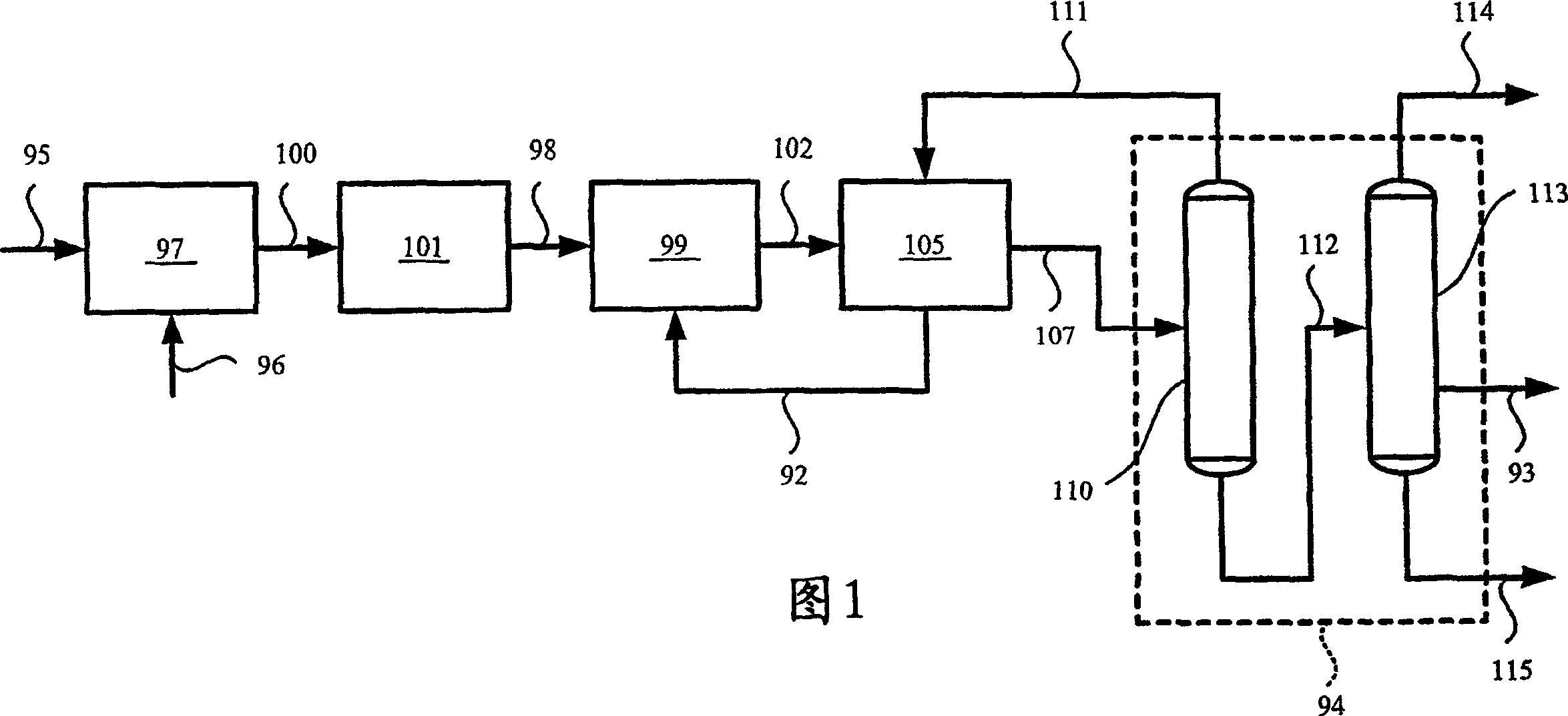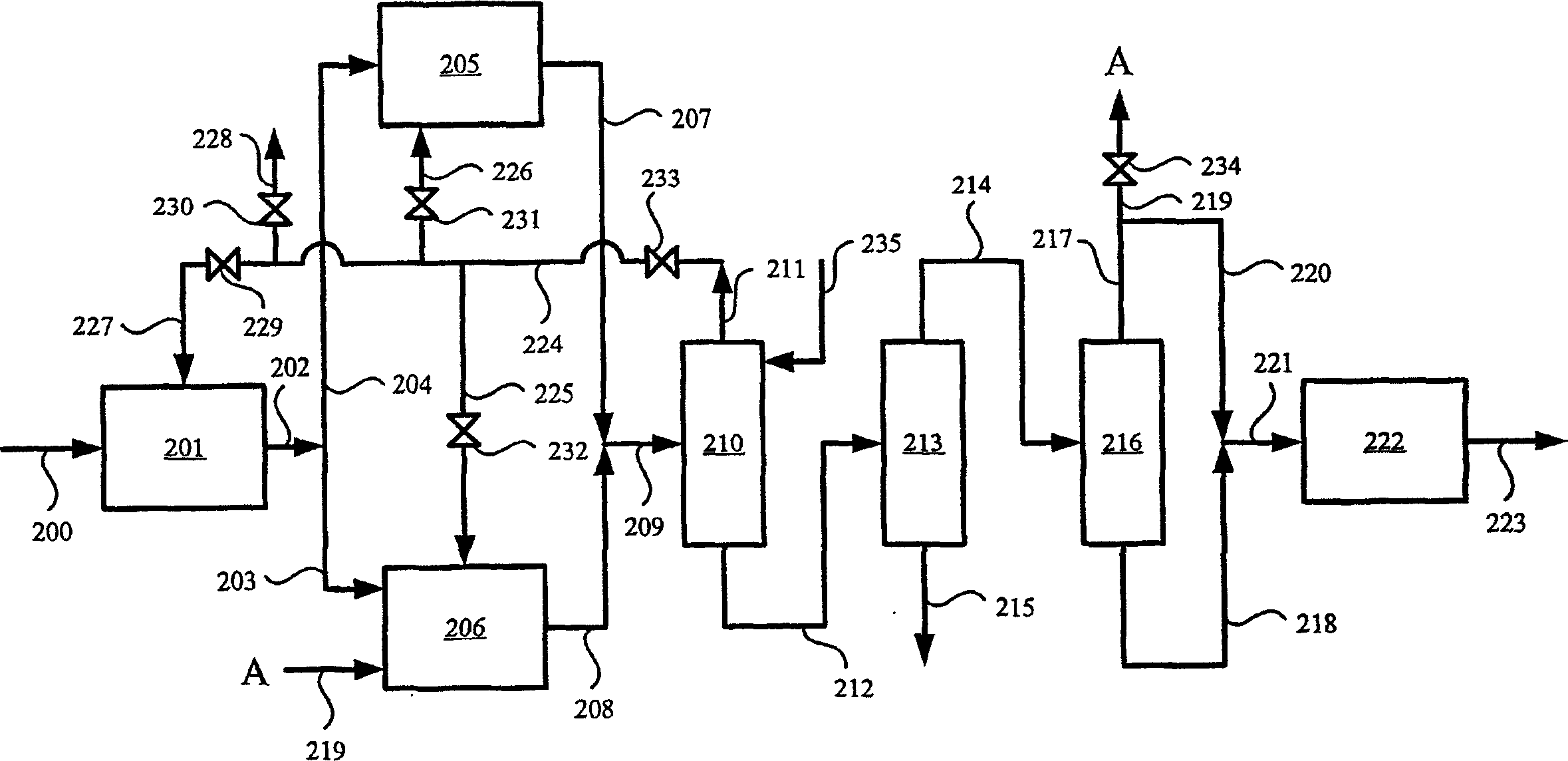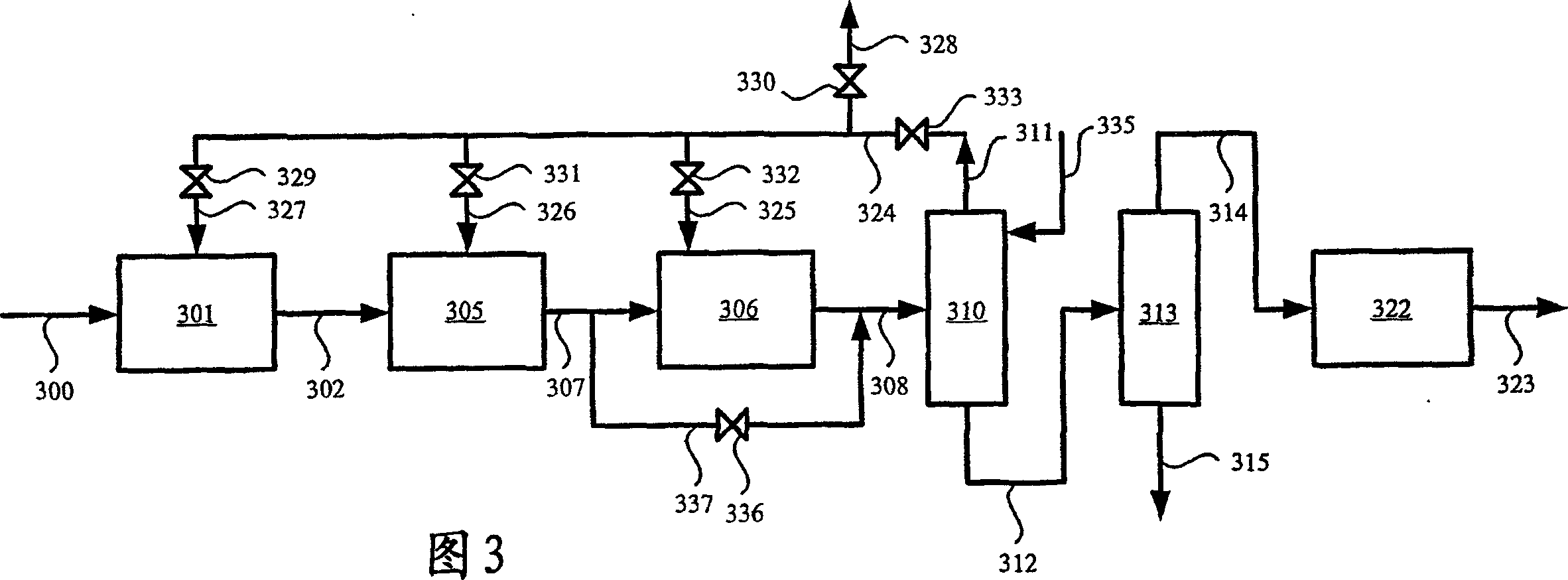Method for controlling the ratio of ethylene to propylene produced in an oxygenate to olefin conversion process
An ethylene and propylene technology, applied in the field of forming ethylene and propylene, which can solve problems such as insensitivity
- Summary
- Abstract
- Description
- Claims
- Application Information
AI Technical Summary
Problems solved by technology
Method used
Image
Examples
Embodiment I
[0322] Embodiment 1 (contrast): Methanol is as OTO raw material
[0323] In Example I (comparative example), a feedstock comprising 99.5 wt% methanol (-0.5 wt% water) was introduced into an OTO microfluidic reactor for its conversion to light olefins. The resulting effluent stream was then analyzed to determine the amount of ethylene relative to propylene formed in the microfluidic reactor. The amount of other products formed in the microfluidic reactor was also determined.
[0324] A SAPO-34 molecular sieve catalyst composition, designated Catalyst Composition "A," was formulated according to US Patent No. 6,440,894, the entire contents of which are incorporated herein by reference. The atomic ratio of silicon to aluminum of the synthetic SAPO-34 molecular sieve used to form the catalyst composition was determined to be 0.068 based on inductively coupled plasma (ICP) spectroscopic analysis. The prepared catalyst composition has the following overall composition: 40 wt% mole...
Embodiment II
[0333] Embodiment II: The methanol and ethanol weight ratio in the OTO raw material is 9: 1
[0334] In Example II, a feedstock comprising 90 wt% methanol and 10 wt% ethanol was introduced into an OTO microfluidic reactor for its conversion to light olefins. The oxygenate-containing feed was introduced into the reactor containing Catalyst Composition A under the same conditions as described in Example I (100 WHSV and 25 psig (175 kPag)). However, unlike Example 1, 9-15 runs were performed for each of the following reaction temperatures: 425°C, 450°C, 475°C, and 500°C to determine the effect of temperature on conversion of feedstock containing mixed alcohols to light olefins and Selective effects (if any).
[0335] The resulting effluent stream was then analyzed in the manner described above in Example I to determine the relative amounts of ethylene and propylene formed in the OTO reactor. The amount of other products formed in the microfluidic reactor was also determined. T...
Embodiment III
[0339] Example III: The ratio of methanol to ethanol in the OTO feedstock is 8:2
[0340] In Example III, a feedstock comprising 80 wt% methanol and 20 wt% ethanol was introduced into an OTO microfluidic reactor for its conversion to light olefins. The oxygenate-containing feed was introduced into the reactor containing Catalyst Composition A under the same conditions as described in Example I (100 WHSV and 25 psig (175 kPag)). However, unlike Example 1, tests were performed for each of the following reaction temperatures: 450°C, 475°C, and 500°C to determine the effect of temperature on the conversion and selectivity (if any) of the feedstock containing mixed alcohols to light olefins. if).
[0341] The resulting effluent stream was then analyzed in the manner described above in Example I to determine the relative amounts of ethylene and propylene formed in the OTO reactor. The amount of other products formed in the microfluidic reactor was also determined. The results of ...
PUM
 Login to View More
Login to View More Abstract
Description
Claims
Application Information
 Login to View More
Login to View More - R&D
- Intellectual Property
- Life Sciences
- Materials
- Tech Scout
- Unparalleled Data Quality
- Higher Quality Content
- 60% Fewer Hallucinations
Browse by: Latest US Patents, China's latest patents, Technical Efficacy Thesaurus, Application Domain, Technology Topic, Popular Technical Reports.
© 2025 PatSnap. All rights reserved.Legal|Privacy policy|Modern Slavery Act Transparency Statement|Sitemap|About US| Contact US: help@patsnap.com



